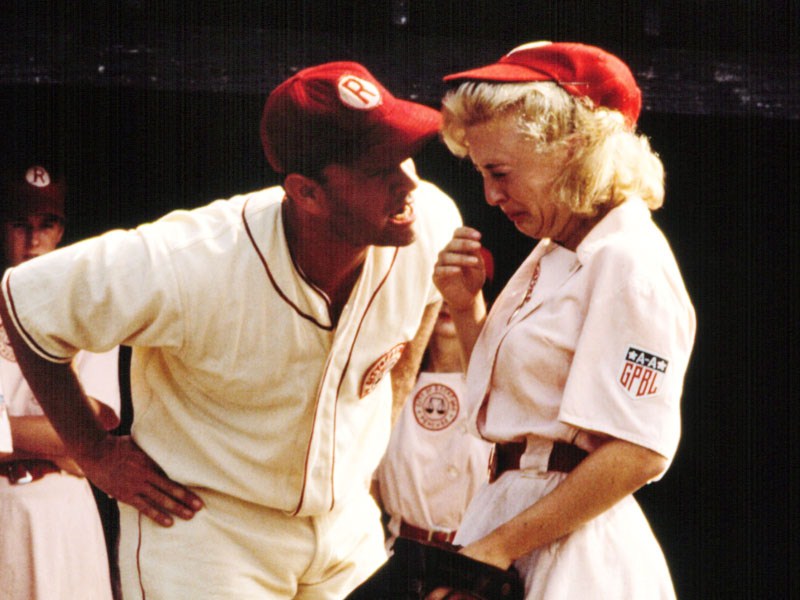Rollover. Rollover. Slice. Slice.
“Stay on the baseball”!!! – Coach Obvious

In this article, I hope to make the case for something I see a lot of good hitters do really well, and a lot of amateur hitters do poorly: rotate. Specifically, being able to stabilize the lumbar spine, while rotating the thorax. It’s a staple in being able to rotate efficiently, and it’s something I don’t see addressed enough. What Coach Obvious from above doesn’t realize is that his “rollover and slice” guy may very well be trying to “stay on the baseball”, but he can’t. His body literally won’t allow him to. And that’s exactly what I hope to help you address today. We’re going to look at why it’s important, how you can assess it, some exercises you can use to address problematic inefficiencies, and the progression I like to use in teaching hitters to rotate efficiently once I know they have the physical ability to do so. This one’s going to be jam packed with info, so buckle up, and let’s get started!
Why Should I Care?
Two words: Health and Performance.
Health:
Our lumbar spine is not meant to drive rotation. It’s meant to be a stable link in the chain that provides the connection from our pelvis to our thorax. It’s designed to transfer energy, not create it. Take a look at this clip:
A lack of either lumbar stability, or thoracic mobility, can have a negative impact on the health of a rotational athletes lower back. If they aren’t able to separate the two, they end up turning together, which isn’t what they were designed to do. And the result of that is often discomfort, and if left alone long enough, injury.
Performance:
It’s been well documented (see here and here) that the kinetic chain is what drives rotation-based movement. What happens if one link in that chain isn’t working? You guessed it: decreased performance. Specifically, were looking at the ability to transfer rotational energy from the pelvis up through the lumber and into the thorax. If you’re not able to rotate segment by segment, your body won’t ALLOW you to move efficiently. We’ll get wayyy more in depth on this in the video at the end of this article, but for now take a look at Mike Trout and Josh Donaldson demonstrating proper segmentation as they decelerate their swings:
Assess
Now that we understand the need to have lumbar stability and thoracic mobility, it’s time to figure out if you/your athletes pass the test.
Stability:
Below is an exercise I’ve found works very well in determining an athletes ability to stabilize their spine during rotation, even as the extremities are working. Generally, I like to see the athlete be able to do a minimum of half their bodyweight (although it can vary based on the cable machine) on this exercise, maintaining correct lumbar positioning, before I give them a “pass” on lumbar stability. The athlete should be able to extend the weight out in front of them, after starting with it by their back shoulder, without losing spinal integrity:
Mobility:
Lock down the pelvis, take out the scaps, and get a true read of your thoracic range of motion. Video explanation:
There are now two ways you can go: If you/your athletes are able to both stabilize the lumbar spine as demonstrated in the “forward cable rotation”, and also passed the “thoracic rotation test”, you’re physically cleared. You’re physically able to perform the required movements, it’s now a matter of flushing that out in your swing. We’ll address that in a second. For those that failed…
Exercise Prescription
For those that failed the Strength Test:
I would recommend working through a dedicated 6 week block in which the forward cable rotations are present in your program 2 times per week. I would recommend starting with 2 weeks of eccentric work, performing 2-4 sets of 3-5 reps w/a 5 sec eccentric:
I would follow that with 2 weeks of isometric work, performing the same sets and reps, with a 3 second isometric:
And then finish with a normal, concentric cable rotation which was already posted above. By the end of that 6 week period, you will have built up a good base of lumbar stability.
For those that failed the Mobility Test:
I’d recommend using this exercise to address your deficiency. It’s a simple add-on to what you already did in the test that you should see pretty quick improvement from, but that will take some work to maintain:
Important Disclaimer
Now, just because you may now have the ability to both stabilize the lumbar, and mobilize the thorax, doesn’t mean it will magically appear in your swing. It simply means you are no longer physically restricted to perform the action your swing is requiring of you. Very likely, your body will have adapted to the lack of stability and/or mobility that it is used to, which will it make it difficult to make the necessary changes we are looking to institute. Which is why I developed a progression to help you do just that.
The Progression
If you’ve made it this far, congrats. You’re almost there. But stick with me because now we’re getting to the good part. We’ve previously discussed the how and why of efficient rotation, but now I want to get into the practical applications and how you can take what you’ve learned and developed and integrate it into your swing to help produce better results where it matters most: on the field.
In the following video you’ll find a more in-depth description of why this matters, specifically relating it to your swing and performance, as well as the progression I will use with our athletes once we have established a physical base that ensures they’re body is ready to perform what we’re asking of it. Enjoy:
I appreciate you all taking the time to read and get better. If you have additional questions, comments, or are interested in learning more about what DAC Baseball does and how we can help you, send me an email at brady@dacbaseball.com.
Stay Hungry.
Brady
